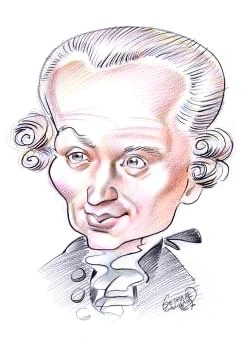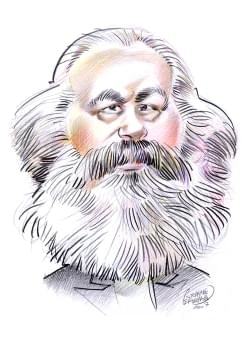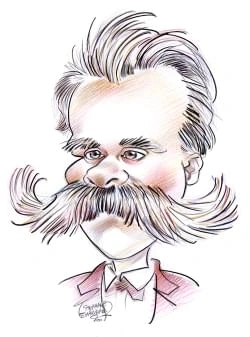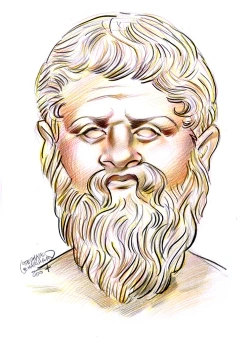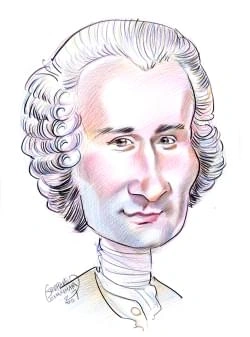786 résultats pour "life"
-
Stress (psychology).
blood flow is diverted from the internal organs and skin to the brain and muscles. Breathing speeds up, the pupils dilate, and perspiration increases. This reaction issometimes called the fight-or-flight response because it energizes the body to either confront or flee from a threat. Another part of the stress response involves the hypothalamus and the pituitary gland, parts of the brain that are important in regulating hormones and many otherbodily functions. In times of stress, the hypothal...
-
Egyptian Art and Architecture - USA History.
The kings of the 1st Dynasty (2920 BC-2770 BC) were buried in the cemetery of their ancestors at Abydos in southern Egypt. Their burial sites were built of mud brick (bricks baked in the sun) and consisted of two parts: a tomb in the desert where the king was buried, and a rectangular funerary enclosure at the desert's edge, whererituals were performed. A pair of stone slabs called stelae marked the tombs and bore the name of the royal occupant. In the 2nd Dynasty (2770 BC-2649 BC), most r...
-
Massachusetts - geography.
mi). Other large artificial lakes include Wachusett Reservoir, East Brimfield Reservoir, and Cobble Mountain Reservoir. Assawompsett Pond, covering about 10 sq km(about 4 sq mi), is the largest natural lake. North Watuppa Pond and Long Pond are other large natural lakes. Lake Chaubunagungamaug, near Webster, is usuallycalled Webster Lake, because the Algonquian name is difficult to pronounce and spell. The full version of the Native American name is said to be the longest place-namein North Amer...
-
Excerpt from Henry IV - anthology.
PRINCE HAL. Or an old lion, or a lover's lute. FALSTAFF. Yea, or the drone of a Lincolnshire bagpipe. PRINCE HAL. What sayest thou to a hare, or the melancholy of Moorditch? FALSTAFF. Thou hast the most unsavoury similes, and art indeed the most comparative rascalliest sweet young prince. But Hal, I prithee trouble me no more withvanity. I would to God thou and I knew where a commodity of good names were to be bought. An old lord of the Council rated me the other day in the street aboutyou, sir,...
-
The Souls of Black Folk by W.
in amused contempt and pity. One ever feels his two-ness,—an American, a Negro; two souls, two thoughts, two unreconciled strivings; two warring ideals in onedark body, whose dogged strength alone keeps it from being torn asunder. The history of the American Negro is the history of this strife—this longing to attain self-conscious manhood, to merge his double self into a better and truer self. Inthis merging he wishes neither of the older selves to be lost. He would not Africanize America, f...
- Life. revue hebdomadaire illustrée américaine. Elle fut fondée par Henry
-
Capital Punishment.
deterrent effect. Capital punishment advocates note that because the death penalty is reserved for the most aggravated murders, the deterrent effect of capitalpunishment on such crimes may not be apparent in data on homicide rates in general. Supporters also urge that the conflicting results of various studies indicate thatthe deterrent effect of the death penalty cannot not be proven or disproven with any certainty. They maintain that in the absence of conclusive proof that the threat ofexecuti...
-
James Monroe.
In October 1786, Monroe resigned from Congress and settled with his bride in Fredericksburg, Virginia, where he began a law practice. His retirement from politics wasbrief. He was soon elected to the town council, and then once again to the Virginia legislature. However, Monroe never lost touch with national politics. He corresponded regularly with both Jefferson and Madison. In 1786 Monroe attended the AnnapolisConvention, which had been called to consider interstate commerce and other matters...
-
-
James Monroe - USA History.
In October 1786, Monroe resigned from Congress and settled with his bride in Fredericksburg, Virginia, where he began a law practice. His retirement from politics wasbrief. He was soon elected to the town council, and then once again to the Virginia legislature. However, Monroe never lost touch with national politics. He corresponded regularly with both Jefferson and Madison. In 1786 Monroe attended the AnnapolisConvention, which had been called to consider interstate commerce and other matters...
-
American Westward Movement - U.
British expansion. However, Native Americans of the Great Lakes and Ohio Valley lashed out against the English in an attempt to preserve their independence, theirland, and their way of life. With the Ottawa chief Pontiac as their most visible leader, the tribes waged a bloody and costly war. As a result, the British governmentdecided to keep the white settlers apart from the Native Americans. It issued the Royal Proclamation of 1763, banning all white settlement beyond the Appalachians andstatin...
-
Laos - country.
by the year 2025. About one-quarter of Laos’s people live in mountainous regions. The rest live in upland valleys or on the flood plains of the Mekong and its tributaries.Just over three-quarters of the population live in rural areas, although the proportion of people living in urban areas is steadily increasing. Vientiane is the capital and largest city of Laos. Louangphrabang, the former royal capital, is an increasingly popular tourist destination. Other major cities are theregional capitals...
-
Venezuela - country.
Venezuela has six navigable rivers. Of the thousand or more streams in the country, the majority flow into the Orinoco. The Orinoco flows east across central Venezuelaand drains approximately four-fifths of the total area of the country. With the tributaries—the Apure, Meta, and Negro rivers—it forms the outlet into the Atlantic Oceanfor the waters of much of the interior of Colombia, as well as of inland Venezuela. F Climate The climate of Venezuela is tropical on the Llanos and along the coas...
-
Maryland - geography.
Maryland has no large natural lakes. The largest body of water is a reservoir, Deep Creek Lake, which has a surface area of only 18 sq km (7 sq mi). It lies on theAllegheny Plateau, behind a dam on a tributary of the Youghiogheny River. C Coastline The deeply indented shoreline has a length of 5,134 km (3,190 mi), of which only 50 km (31 miles) fronts on the Atlantic Ocean. The most significant coastal feature isChesapeake Bay. In the bay are many islands and Kent Island is the largest. The sta...
-
Maryland - USA History.
Maryland has no large natural lakes. The largest body of water is a reservoir, Deep Creek Lake, which has a surface area of only 18 sq km (7 sq mi). It lies on theAllegheny Plateau, behind a dam on a tributary of the Youghiogheny River. C Coastline The deeply indented shoreline has a length of 5,134 km (3,190 mi), of which only 50 km (31 miles) fronts on the Atlantic Ocean. The most significant coastal feature isChesapeake Bay. In the bay are many islands and Kent Island is the largest. The sta...
-
Vietnam - country.
E Natural Resources Vietnam’s most valuable natural resource is its land, particularly the fertile, alluvial soils in the Red and Mekong deltas. Some 29 percent of the land is currently beingcultivated. Vietnam has some valuable mineral resources, including gold, iron, tin, zinc, phosphate, chromite, apatite, and anthracite coal. Most deposits are located in the northernpart of the country. Few attempts were made to extract these minerals until the French takeover of Vietnam at the end of the 1...
-
Michigan - geography.
The interior location of Michigan in the northern part of North America results in a continental climate, characterized by four definite seasons with moist, mild to hotsummers and snowy, cold winters. Winds off of Lakes Michigan and Superior in winter create heavy snow accumulations in nearby areas. The tempering effects of LakeMichigan account for the presence of the state’s famous fruit-growing belt along the lake’s shore. Since the water is colder than the land in spring, the westerly windspa...
-
-
Michigan - USA History.
The interior location of Michigan in the northern part of North America results in a continental climate, characterized by four definite seasons with moist, mild to hotsummers and snowy, cold winters. Winds off of Lakes Michigan and Superior in winter create heavy snow accumulations in nearby areas. The tempering effects of LakeMichigan account for the presence of the state’s famous fruit-growing belt along the lake’s shore. Since the water is colder than the land in spring, the westerly windspa...
-
Arthropod - biology.
through a series of distinct phases to become adults. Larvae may also inhabit different environments and eat different foods than their parents. The life spans ofarthropods range from a few weeks to several decades. V ARTHROPOD EVOLUTION The evolutionary origins of modern arthropods are unclear and complex. It is generally accepted that the phylum is polyphyletic—that is, derived from several separateancestral lines. The ancestors of arthropods were ancient aquatic segmented worms, similar to p...
-
Malaria.
last long and is unlikely to be fatal. Infants and children are especially vulnerable to malaria because they have not yet built up immunity to the parasite. Some peoplehave genetic traits that help them resist malaria. Sickle-cell anemia and thalassemia, for example, are inherited blood disorders linked to malaria resistance. Travelers who lack immunity to malaria should take precautionary measures when visiting areas where the disease is prevalent. Such measures include using insectrepellents,...
-
Commentry Author 's Notes Life of Pie
The author however is suspicious, he poses leading questions to find out the motivation of Mr.Adirubasamy, finally his curiosity is piqued and he asks to hear the story. The storyteller though places a condition to telling the story; the author must pay proper attention, which cour se the eager author accepts. So the story is told, in the telling Mr.Adirubasamy mentally transports the author through the town, to the botanical gardens and an old zoo. At the end of the story he encourages the...
-
Isaac NewtonIINTRODUCTIONIsaac Newton (1642-1727), English physicist, mathematician, and natural philosopher, considered one of the most important scientists of all time.
B Calculus (Newton’s “Fluxional Method”) In 1669 Newton gave his Trinity mathematics professor Isaac Barrow an important manuscript, which is generally known by its shortened Latin title, De Analysi . This work contained many of Newton’s conclusions about calculus (what Newton called his “fluxional method”). Although the paper was not immediately published, Barrowmade its results known to several of the leading mathematicians of Britain and Europe. This paper established Newton as one of the...
-
Isaac Newton.
B Calculus (Newton’s “Fluxional Method”) In 1669 Newton gave his Trinity mathematics professor Isaac Barrow an important manuscript, which is generally known by its shortened Latin title, De Analysi . This work contained many of Newton’s conclusions about calculus (what Newton called his “fluxional method”). Although the paper was not immediately published, Barrowmade its results known to several of the leading mathematicians of Britain and Europe. This paper established Newton as one of the t...
-
Arabic Literature
I
INTRODUCTION
Arabic Literature, literature written in the Arabic language, from the 6th century to the present.
The life of the Prophet Muhammad also generated its own literary sources, primary among which is the hadith. The hadiths were a collection of the Prophet's sayings and actions, transmitted through a chain of authorities said to go back to Muhammad himself. The two most famous collections of hadiths are those of al-Bukhari andMuslim in the 9th century. These works provide a wealth of information covering all aspects of a Muslim's life, from prayer to personal, social, and business conduct. The...
-
Michelangelo
I
INTRODUCTION
Michelangelo (1475-1564), Italian painter, sculptor, architect, and poet whose artistic accomplishments exerted a tremendous influence on his contemporaries and on
subsequent European art.
(17 ft) tall, was carved from a block of stone that another sculptor had left unfinished. Michelangelo drew on the classical tradition in depicting David as a nude,standing with his weight on one leg, the other leg at rest ( see contrapposto). This pose suggests impending movement, and the entire sculpture shows tense waiting, as David sizes up his enemy and considers his course of action. While David reveals Michelangelo's expert knowledge of anatomy (he had been dissecting corpses for about...
-
-
Michelangelo.
(17 ft) tall, was carved from a block of stone that another sculptor had left unfinished. Michelangelo drew on the classical tradition in depicting David as a nude,standing with his weight on one leg, the other leg at rest ( see contrapposto). This pose suggests impending movement, and the entire sculpture shows tense waiting, as David sizes up his enemy and considers his course of action. While David reveals Michelangelo's expert knowledge of anatomy (he had been dissecting corpses for about...
-
Costa Rica - country.
protection from future deforestation is not guaranteed. Deforestation places Costa Rica’s rich biodiversity in danger. The country’s location on the cusp between Northand South America and its abundance of tropical forests make it home to a great variety of species, many of them rare and threatened. Deforestation also contributesto the country’s problematic rate of soil erosion. Costa Rica is party to international treaties concerning biodiversity, climate change ( see Global Warming), endangere...
-
Slavery in the United States - U.
tripled, from about 1.2 million to almost 4 million in 1860. The natural growth of the slave population meant that slavery could survive without new slave imports. Natural population growth also hastened the transition from an African to an African American slave population. By the 1770s, only about 20 percent of slaves in thecolonies were African-born, although the concentration of Africans remained higher in South Carolina and Georgia. After 1808 the proportion of African-born slavesbecame tin...
-
John Adams.
the British authorities. The royal governor, aware of Adams's ability and growing influence, offered him the post of advocate general in the admiralty court. Adams declined the appointment,recognizing it as a bribe to bring him over to the side of the British government. A3 Adams and the Boston Massacre Adams generally supported the popular resistance to the British government, but he did not condone violence or mob action. Adams was greatly disturbed by theBoston Massacre of 1770, an incident...
-
John Adams
the British authorities. The royal governor, aware of Adams's ability and growing influence, offered him the post of advocate general in the admiralty court. Adams declined the appointment,recognizing it as a bribe to bring him over to the side of the British government. A3 Adams and the Boston Massacre Adams generally supported the popular resistance to the British government, but he did not condone violence or mob action. Adams was greatly disturbed by theBoston Massacre of 1770, an incident...
-
John Adams - U.
the British authorities. The royal governor, aware of Adams's ability and growing influence, offered him the post of advocate general in the admiralty court. Adams declined the appointment,recognizing it as a bribe to bring him over to the side of the British government. A3 Adams and the Boston Massacre Adams generally supported the popular resistance to the British government, but he did not condone violence or mob action. Adams was greatly disturbed by theBoston Massacre of 1770, an incident...
-
Croatia - country.
III PEOPLE OF CROATIA The total population of Croatia at the time of the 1991 census was 4,784,265; a 2008 estimate was 4,491,543. During and after the war ethnic Serbs fled Croatia whileethnic Croats moved in. Croatia’s population growth rate in 2008 was -0.04 percent, despite population gains due to immigration. Croatia’s natural population growthrate, which measures births and deaths, has been negative since 1998. Life expectancy at birth was 75 years in 2008. The population density in 2008...
-
Armenia (country) - country.
because of ethnic tension brought on by a secessionist conflict in Nagorno-Karabakh, a region inhabited predominantly by Armenians in western Azerbaijan. In thereverse direction, many Armenian refugees entered Armenia from Azerbaijan during the conflict. Armenia’s official state language is Armenian, an Indo-European language with no surviving close relatives. It has a unique 38-letter alphabet that dates from the early5th century. Of its many spoken dialects, the most important are Eastern or Y...
-
-
Dominican Republic - country.
Manatees and sea turtles also live in Dominican waters. Common birds include blue herons, glossy ibis, flamingos, and brown pelicans. E Environmental Issues Urban dwellers of the Dominican Republic enjoy good access to safe water, but rural communities do not. While current water use is low relative to available resources,water shortages do occur. Although deforestation was once a serious problem in the Dominican Republic, by the beginning of the 21st century, the annual rate of deforestation h...
-
Slovakia - country.
The country is divided informally into the three regions of Western Slovakia, Central Slovakia, and Eastern Slovakia, corresponding to administrative divisions that wereabolished in 1989. Most of Slovakia’s 600,000 Hungarians live in the southern parts of Western and Central Slovakia, which served as the cultural center of Hungary forseveral centuries after Hungary proper was invaded by the Ottomans in the 16th century. The Ruthenian and Ukrainian minorities are concentrated in the northernregio...
-
Sydney (Australia) - geography.
blocks in the eastern suburbs and around railway stations elsewhere; and homes on large lots in the outer suburbs, especially those to the northwest. For publichousing, the state government built a number of high-rise apartment blocks in run-down inner suburbs after World War II (1939-1945). These housing projects weresoon deemed unsuccessful and were discontinued because they fostered crime and other social problems. More recently, public housing has taken the form of separateor semidetached ho...
-
Holocaust
I
INTRODUCTION
Holocaust, the almost complete destruction of Jews in Europe by Nazi Germany and its collaborators during World War II (1939-1945).
relation to the Jews. He claimed that the Jews had achieved economic dominance and the ability to control and manipulate the mass media to their own advantage. Hewrote of the need to eradicate their powerful economic position, if necessary by means of their physical removal. IV UNIQUENESS OF NAZI ANTI-SEMITISM The linking of anti-Semitic accusations to race struggle is what made Nazism so genocidal. The Nazis believed the Jews were responsible for what they regarded as thedegeneracy of modern...
-
Holocaust .
relation to the Jews. He claimed that the Jews had achieved economic dominance and the ability to control and manipulate the mass media to their own advantage. Hewrote of the need to eradicate their powerful economic position, if necessary by means of their physical removal. IV UNIQUENESS OF NAZI ANTI-SEMITISM The linking of anti-Semitic accusations to race struggle is what made Nazism so genocidal. The Nazis believed the Jews were responsible for what they regarded as thedegeneracy of modern...
- Narrative of the life of Frederick Douglass
-
Ukraine - country.
a major hazard, especially to Ukraine’s water supply. The Chernobyl’ complex was finally shut down completely in December 2000, with the financial assistance ofWestern nations. The funds were to pay for the completion of two other nuclear power plants that would produce enough power to make up for the loss of the powersupply from the Chernobyl’ plant. III PEOPLE OF UKRAINE The population of Ukraine was estimated in 2008 at 45,994,287, giving the country a population density of 76 persons per s...
-
Maine - geography.
temperatures range from 17° to 21°C (62° to 70°F) with the southern interior being the warmest and the east coast and north the coolest. However, daytime summertemperatures may reach the lower 30°s C (lower 90°s F), and temperatures in winter have fallen as low as -44°C (-48°F) in the interior. D2 Precipitation Precipitation (rainfall and snowfall) in Maine is evenly distributed throughout the year. Most areas receive from 860 to 1,020 mm (34 to 40 in) yearly, although parts ofthe coast are som...
-
-
Maine - USA History.
temperatures range from 17° to 21°C (62° to 70°F) with the southern interior being the warmest and the east coast and north the coolest. However, daytime summertemperatures may reach the lower 30°s C (lower 90°s F), and temperatures in winter have fallen as low as -44°C (-48°F) in the interior. D2 Precipitation Precipitation (rainfall and snowfall) in Maine is evenly distributed throughout the year. Most areas receive from 860 to 1,020 mm (34 to 40 in) yearly, although parts ofthe coast are som...
-
South Dakota - geography.
C1 Temperatures Average January temperatures are everywhere less than -4° C (24° F) and decrease to less than -12° C (10° F) in some northern sections. The January temperaturesin Sioux Falls range from -16° to -4° C (3° to 24° F). Nightime lows of -29° C (-20° F) occur during most winters. July averages are in the low and middle 20°s C (lowand middle 70°s F) throughout most of the state, and are somewhat lower in the Black Hills. The average temperature range in Sioux Falls in July is 17° to 30...
-
South Dakota - USA History.
C1 Temperatures Average January temperatures are everywhere less than -4° C (24° F) and decrease to less than -12° C (10° F) in some northern sections. The January temperaturesin Sioux Falls range from -16° to -4° C (3° to 24° F). Nightime lows of -29° C (-20° F) occur during most winters. July averages are in the low and middle 20°s C (lowand middle 70°s F) throughout most of the state, and are somewhat lower in the Black Hills. The average temperature range in Sioux Falls in July is 17° to 30...
-
Nebraska - geography.
by natural resource districts to limit the rate of pumping for irrigation. C Climate Nebraska has a typical continental climate with wide seasonal variations in temperature. C1 Temperature Winter temperatures below -20°C (0° F) and summer temperatures in the upper 30°s C (lower 100°s F) are common. The average January temperature varies from about -7° C (about 20° F) in the northeast to about -2° C (about 29° F) in the southwest. The average for July, thehottest month, ranges from about 26° C...
-
Nebraska - USA History.
by natural resource districts to limit the rate of pumping for irrigation. C Climate Nebraska has a typical continental climate with wide seasonal variations in temperature. C1 Temperature Winter temperatures below -20°C (0° F) and summer temperatures in the upper 30°s C (lower 100°s F) are common. The average January temperature varies from about -7° C (about 20° F) in the northeast to about -2° C (about 29° F) in the southwest. The average for July, thehottest month, ranges from about 26° C...
-
New Jersey - geography.
C Soils Broadly defined, all of New Jersey’s soils are podzolic soils; that is, they are acidic and contain fairly high amounts of iron oxides. The soils in northern New Jersey areirregular in quality and contain rock fragments and small stones deposited by the continental glaciers of the last Ice Age. The soils of the inner coastal plain, unaffectedby glaciation, are the richest in the state, while those of the outer coastal plain are generally infertile. The newer soil classification system d...
-
New Jersey - USA History.
C Soils Broadly defined, all of New Jersey’s soils are podzolic soils; that is, they are acidic and contain fairly high amounts of iron oxides. The soils in northern New Jersey areirregular in quality and contain rock fragments and small stones deposited by the continental glaciers of the last Ice Age. The soils of the inner coastal plain, unaffectedby glaciation, are the richest in the state, while those of the outer coastal plain are generally infertile. The newer soil classification system d...
-
Idaho - geography.
Idaho-Montana state line in the southern part of the Bitterroot Mountains. Consequently, nearly all the rivers in the state drain toward the Pacific. Most of Idaho lieswithin the drainage basin of the Columbia River system. The Snake River, which is the chief river in southern and central Idaho, follows a crescent-shaped course forabout 790 km (about 490 mi) across southern Idaho. It then swings northward along the Idaho state line and joins the Columbia River in Washington. Major tributariesof...
-
-
Idaho - USA History.
Idaho-Montana state line in the southern part of the Bitterroot Mountains. Consequently, nearly all the rivers in the state drain toward the Pacific. Most of Idaho lieswithin the drainage basin of the Columbia River system. The Snake River, which is the chief river in southern and central Idaho, follows a crescent-shaped course forabout 790 km (about 490 mi) across southern Idaho. It then swings northward along the Idaho state line and joins the Columbia River in Washington. Major tributariesof...
-
Indiana - geography.
Michigan in Michigan. There are about 1,000 small natural lakes in Indiana, chiefly in the northern part of the state. The largest is Lake Wawasee, which covers almost 13 sq km (5 sq mi). Inthe central part of the state there are several lakes that were created behind dams on a number of smaller streams. They include Monroe Lake, near Bloomington; Geistand Eagle Creek reservoirs, northeast and northwest of Indianapolis; and Mississinewa and Huntington reservoirs, north of Marion. C Climate Most...
}})


